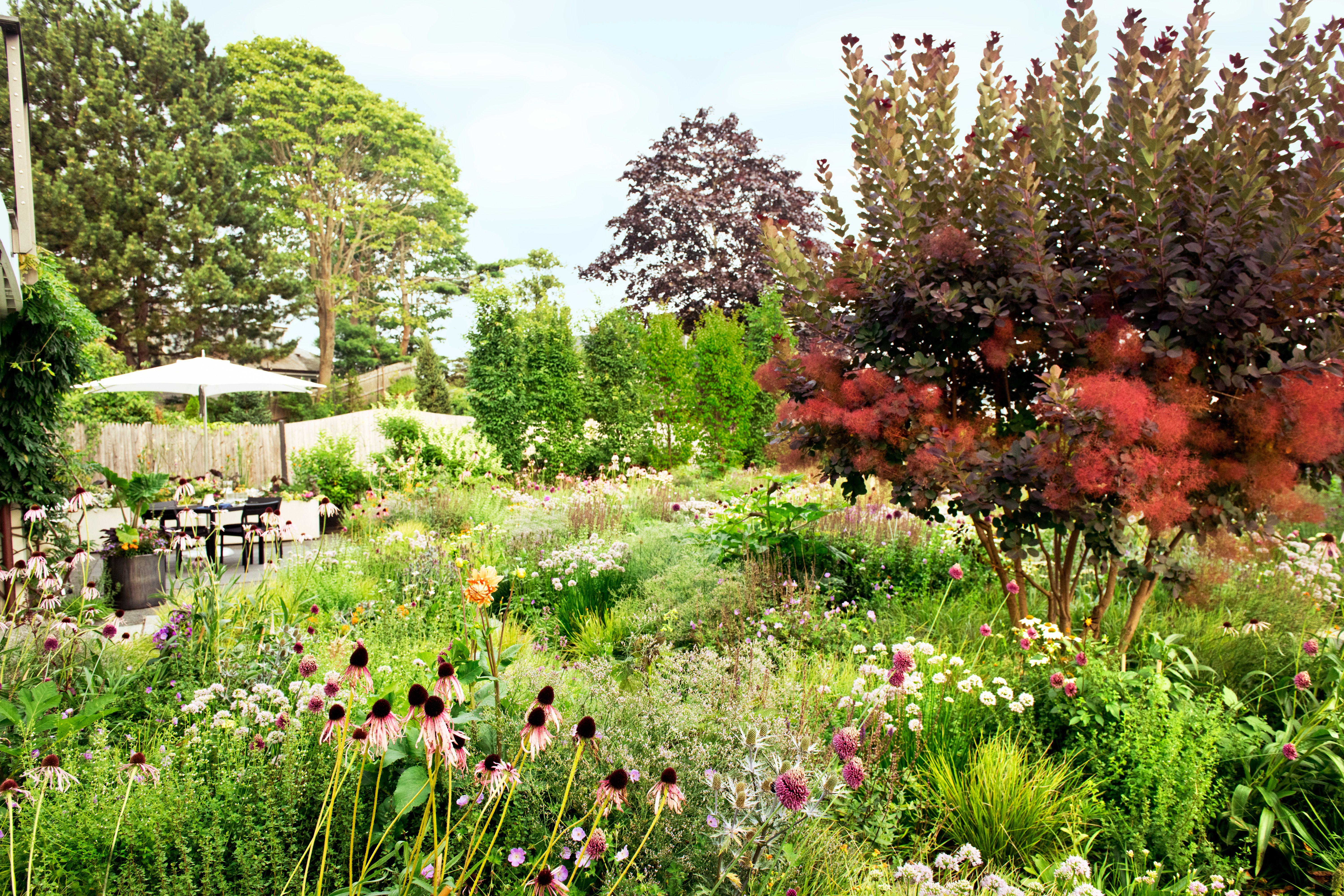Key Takeaways
- Identify when your yard is the least attractive and select plants with year-round interest.
- Give edges a makeover and add plants that grow vertically to draw up the eye.
- Early flowering bulbs and evergreens add color to a drab winter landscape.
The best garden doesn’t have a single stellar season—it has four all-star seasons. It's a garden that beckons you to return again and again to tend it, enjoy it, and share it with others because it grows and changes daily. Add 12 months of interest to your planting space by designing with year-round intention. From pocket-sized plots to expansive flower borders, any size garden can shine year-round with these tips.
1. Consider the Calendar
When analyzing your garden for year-round interest, use the calendar as a guide. Note which plants capture your attention each month. Then review the calendar and identify bland and boring stretches of time. This simple calendar mindset will help guide you in your planning and plant purchases.
2. Employ Hardworking Plants
Plants that offer multiple seasons of interest are a win-win, especially in small yards. When selecting flowering landscape plants, look beyond their bloom time. Do they have a notable branching structure that will add form to the space? What fall color do they offer? Any winter berries?
Count on these hardworking trees, shrubs, and perennials to capture your attention in two or more seasons:
- Trees: Crabapple (Malus spp.), dogwood (Cornus spp.), serviceberry (Amelanchier spp.)
- Shrubs: Blueberry (Vaccinium spp.), creeping mahonia (Mahonia repens), hydrangea (Hydrangea spp.)
- Perennials: Threadleaf blue star (Amsonia hubrichtii), Lenten rose (Helleborus spp.), ornamental grasses, such as switchgrass (Panicum virgatum), stonecrop (Sedum spp.)
3. Mix in Berries
Not only are berry-producing trees and shrubs an aesthetic boost to the landscape, but they also cater to local wildlife. Search out native trees and shrubs known for their fall and winter berries. A few of favorite North American natives include American cranberrybush viburnum, crabapple, hawthorn, staghorn sumac, Eastern red cedar, and winterberry.
4. Fall for Perennials
A host of easy-to-grow, long-flowering perennials shine in the waning weeks of autumn. While flowering perennials are beloved for their early summer show, there is a whole group of these come-again plants that save the best for last. They flower with abandon until the first hard frost, colorfully carrying the garden toward winter. Count on these fall-blooming perennials to send the garden into winter with style: boltonia, calamint, goldenrod, New York aster, pink turtlehead, and Russian sage.
Related
5. Define the Edge
If a garden area is lacking interest, it might be that it simply needs structure to direct the eye. A defined bed edge is a surefire way to give a garden structure. Whether you use stones, bricks, or a shallow trench along the edge, a bedside boundary will add definition year-round.
6. Think Vertical
When annuals and perennials are unfurling flowers at ground level, it’s easy to overlook vertical garden elements. Lofty perennials, along with intriguing shrubs and small trees, draw the eye up, adding a vertical dimension to the landscape. Look for opportunities to add year-round interest in the vertical plane of your garden. Some easy-care, native small trees include flowering dogwood, redbud, and sweetbay magnolia.
7. Get an Early Start
Wake up the gray days at the end of winter with flowering bulbs. Often called minor bulbs, tiny flowering plants often push up foliage when snow is still dotting the landscape and temperatures are hovering around freezing. Extra easy to plant because they are so tiny, minor bulbs like crocus, grape hyacinth, anemone, and squill are best planted in drifts of 20 or more. Plant the bulbs in the fall. Simply dig a trench 3 to 4 inches deep and arrange the bulbs so they are a couple of inches apart in the fall. Backfill and enjoy sweeps of color in late winter and early spring.
8. When in Doubt, Add an Evergreen
Contributing color, texture, and form to the landscape 12 months a year, evergreens offer garden interest year-round. Remember, evergreen plants are far more than the needled spruce, pine, and juniper that might come to mind. Arborvitae, boxwood, holly, and some magnolia and rhododendron species have a leafy evergreen nature that is a welcome landscape addition.
9. Play with Contrasting Textures
Don’t overlook the power of texture for creating interest in the landscape. When flower color fades, well-planned texture duos will take center stage. Create a high-energy atmosphere in your space by pairing contrasting textures, such as combining a hosta with large leaves alongside a feathery astilbe.
Texture is especially valuable in the winter garden. A dense, spikey juniper growing alongside a soft, feathery white pine is sure to draw the eye. Winter texture isn’t confined to evergreen plants; perennials left standing through winter and leafless woody plants of all sorts add interest when thoughtfully paired with contrasting textures.



